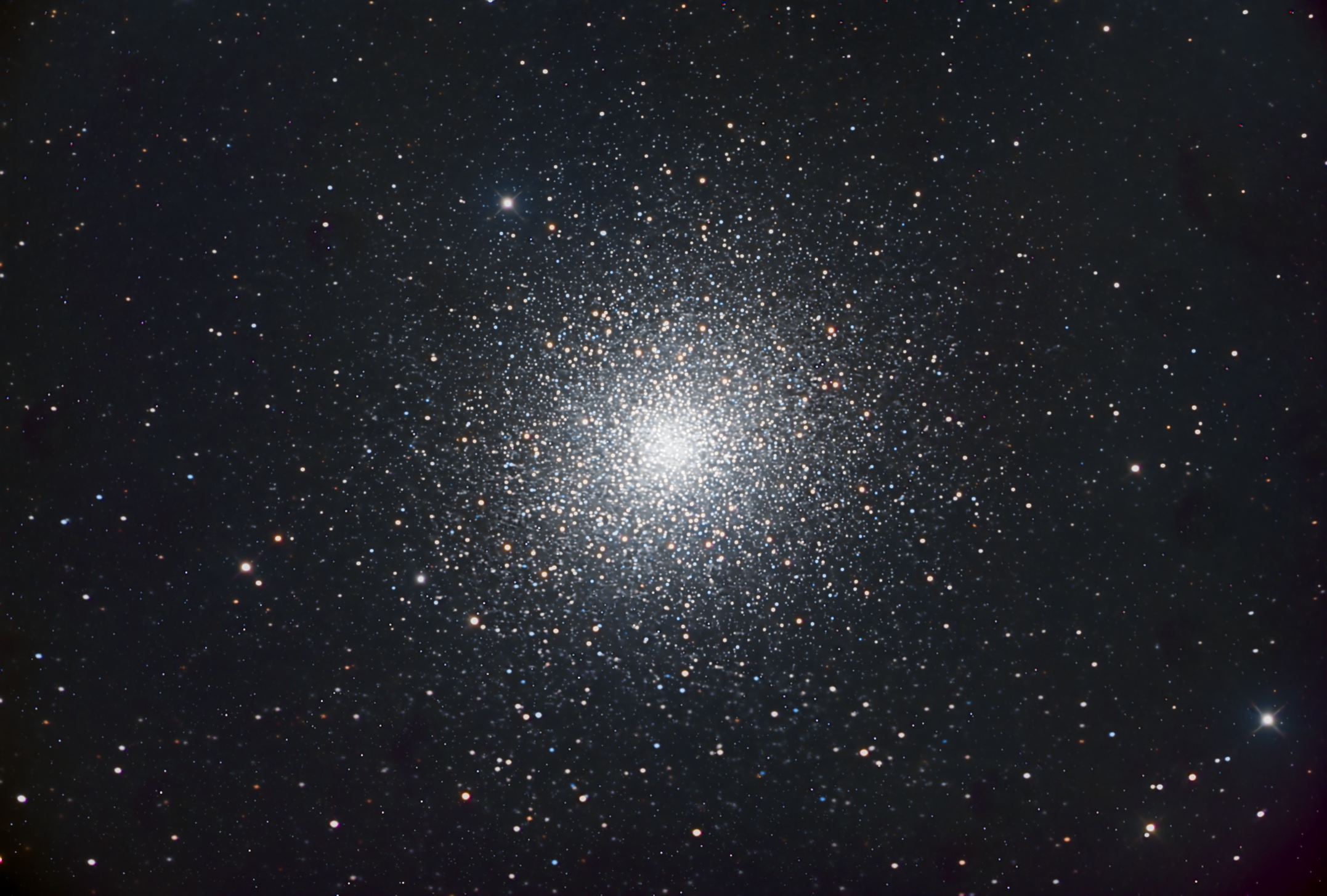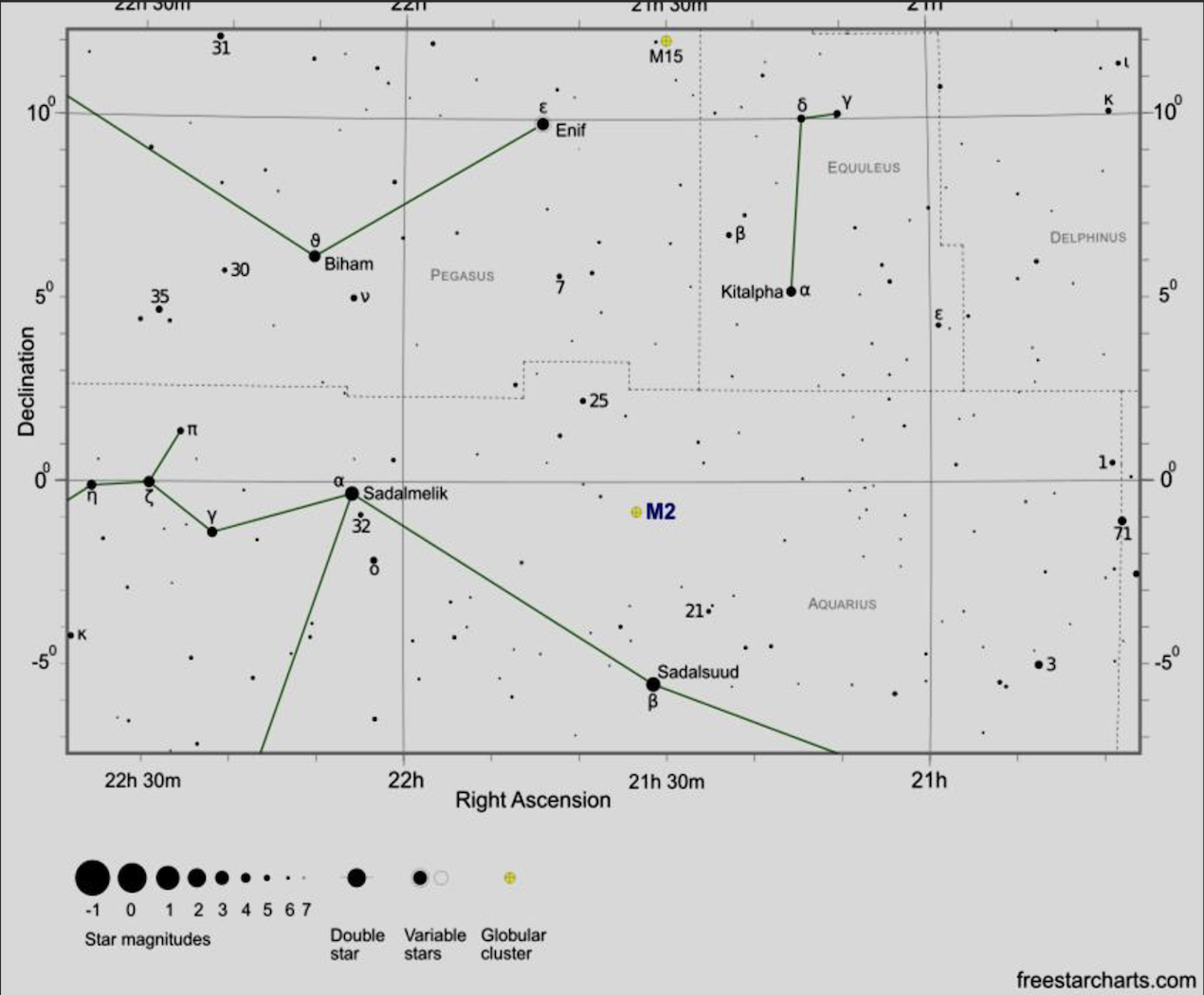by Glenn Chaple
Messier 2 – Globular Cluster in Aquarius (Mag 6.5; Size 6-8” [visual], 12-16’ [photographically])
Autumn can be a wistful time of year for the globular cluster aficionado as the globular-rich constellations of summer, notably Ophiuchus, Scorpius and Sagittarius, are rapidly disappearing in the western sky. Fortunately, a few stragglers remain visible on October evenings, including the bright globular cluster Messier 2 (NGC 7089) in Aquarius.
Charles Messier found and cataloged it on the evening of September 11, 1760, 14 years to the day after it was stumbled upon by the Italian-born French astronomer Jean-Dominique Maraldi while observing de Chéseaux’s Comet. To both Maraldi and Messier, the object appeared nebulous. It was William Herschel who, in 1783, was able to resolve M2 into its individual stars.
 M2 is located at the 2000.0 coordinates RA 21h33m27,0s and DEC -00o49’23.7”, some 5 degrees north of the 3rd magnitude star beta (β) Aquarii and roughly 10 degrees east and slightly north of 3rd
M2 is located at the 2000.0 coordinates RA 21h33m27,0s and DEC -00o49’23.7”, some 5 degrees north of the 3rd magnitude star beta (β) Aquarii and roughly 10 degrees east and slightly north of 3rd
magnitude alpha (α) Aquarii.
M2 photo (left) by Mario Motta.
To find it manually, aim your telescope towards this location (refer to the finder chart, below) and conduct a low-power sweep until a hazy circular patch of light enters the field of view. From there, switch to higher magnifications for that “up close and personal” view.
M2 offers several challenges for the visual observer. 1. Can you see it with the unaided eye? At 
magnitude 6.3, M2 should be barely visible from a dark-sky location on a clear, moonless night. 2. What’s the smallest aperture that will resolve M2 into its component stars? This would be an interesting activityfor an astronomy club whose members would observe M2 with different-sized telescopes and comparenotes. 3. Can you see a dark curving lane that crosses the northeast edge of M2? In The Messier Album,co-author John Mallas includes a sketch of M2 and the dark lane as they appeared in a 4-inch refractor. Most resources cite a distance to M2 of 37,000 light-years. It has a calculated diameter of 150 to 175 light-years and contains an estimated 100,000 to 150,000 stars.
(NOTE: Messier 2 was previously featured as the August, 2009, Observer’s Challenge)
